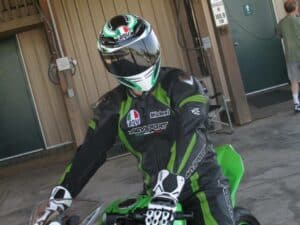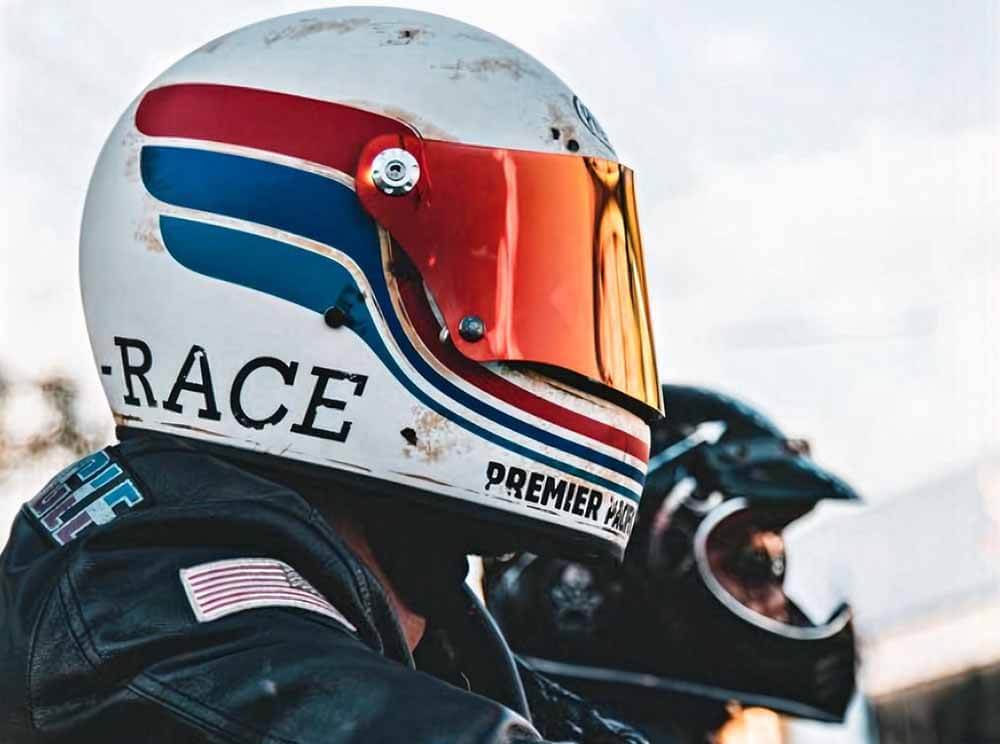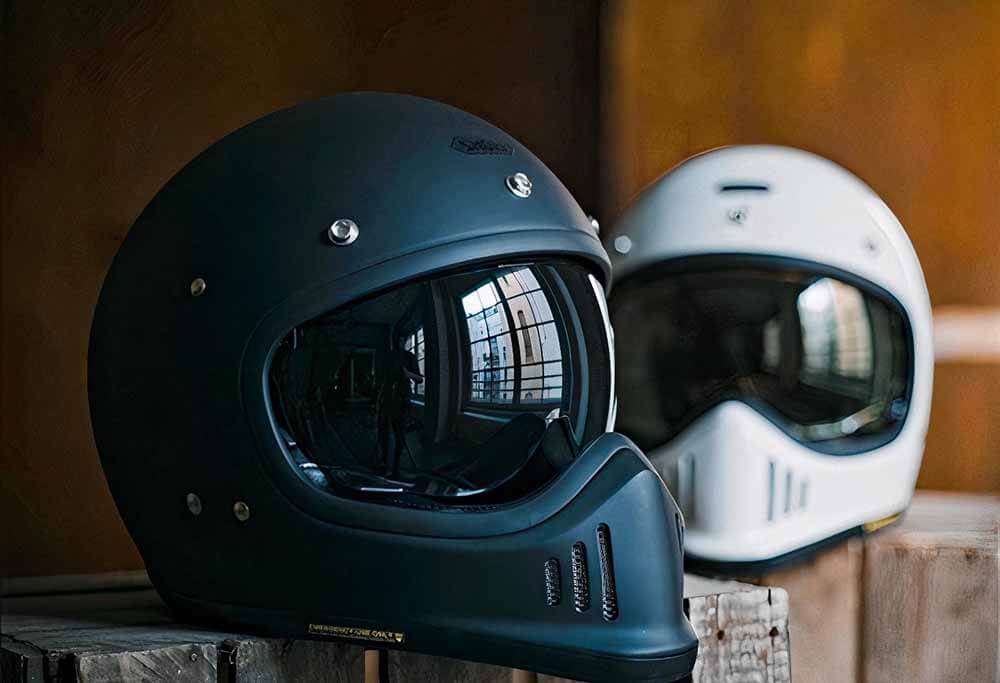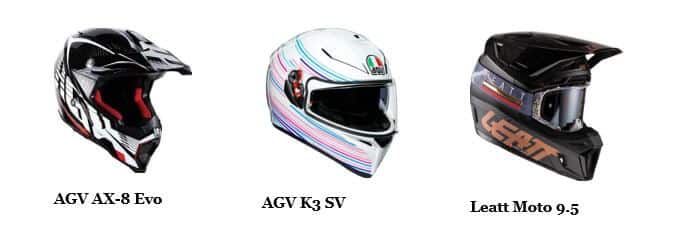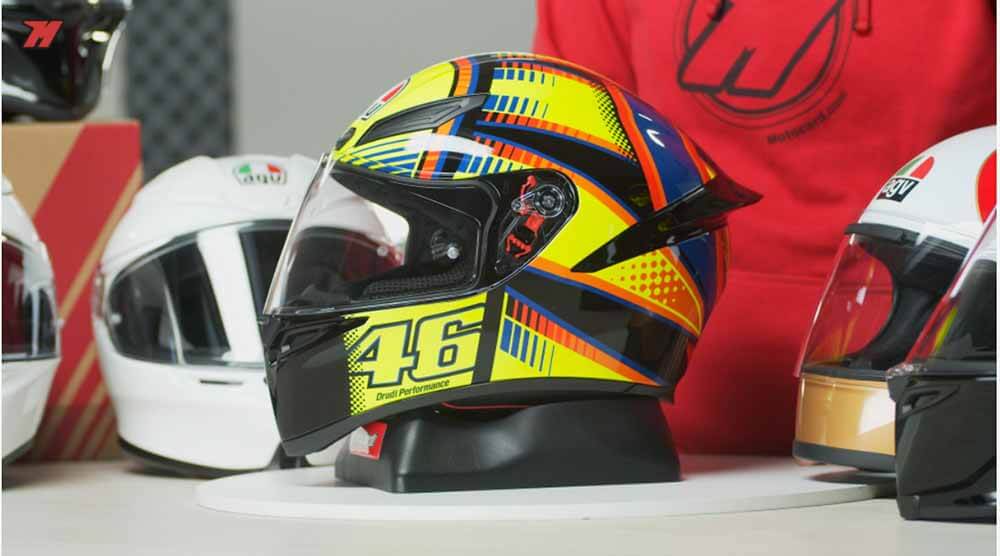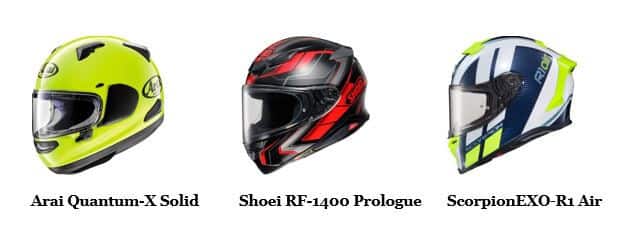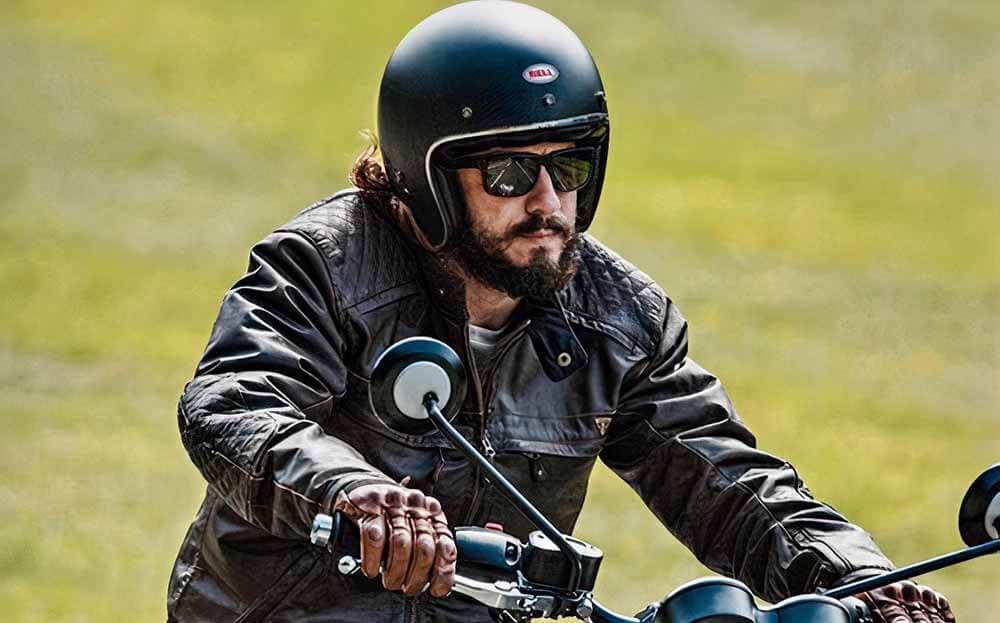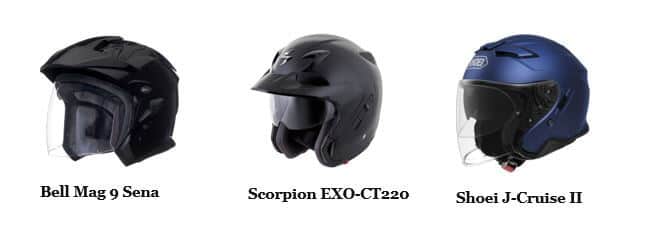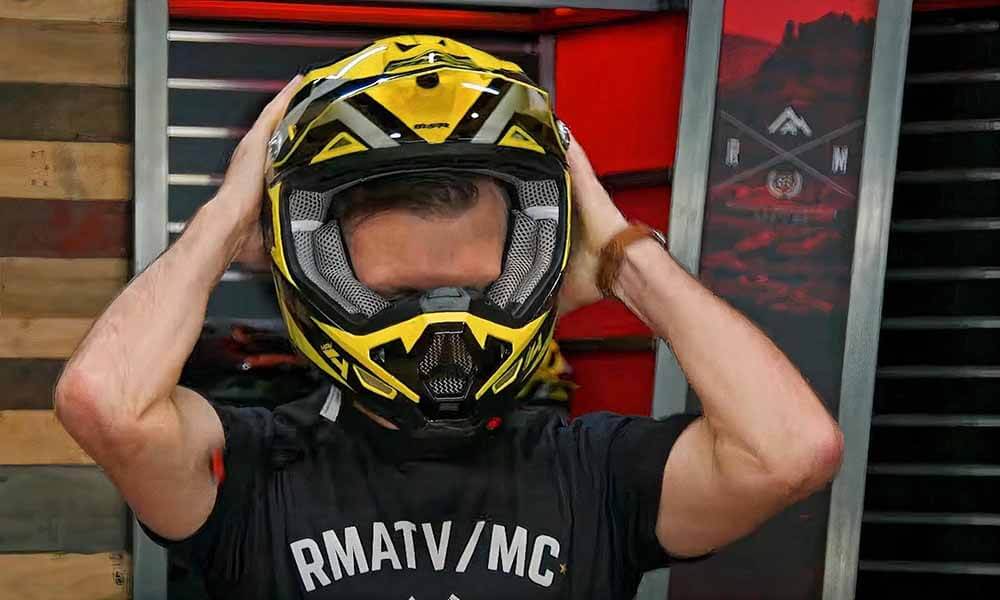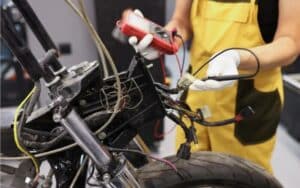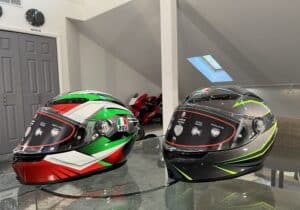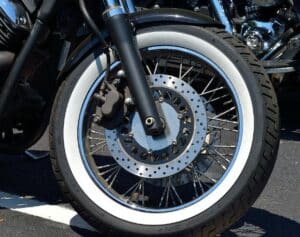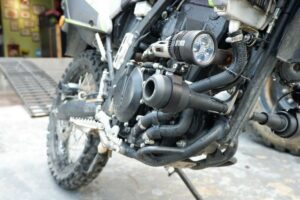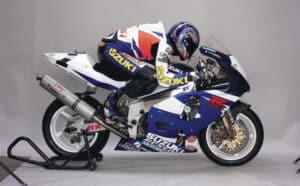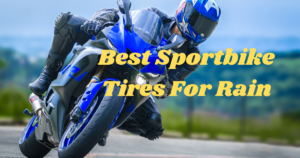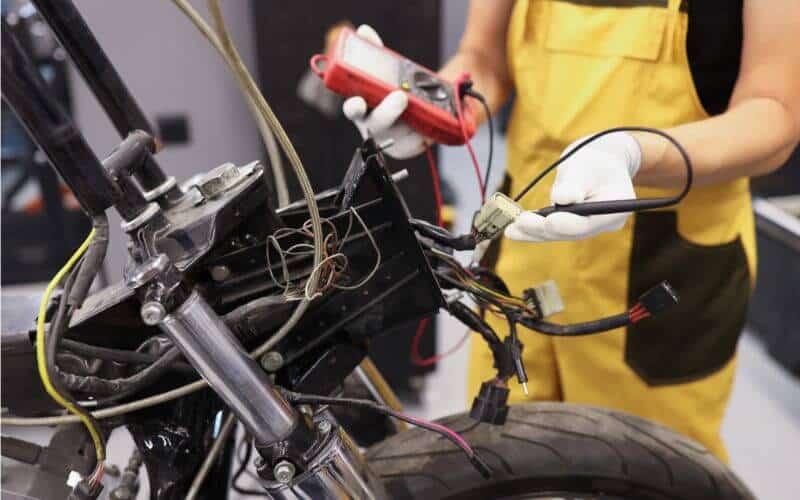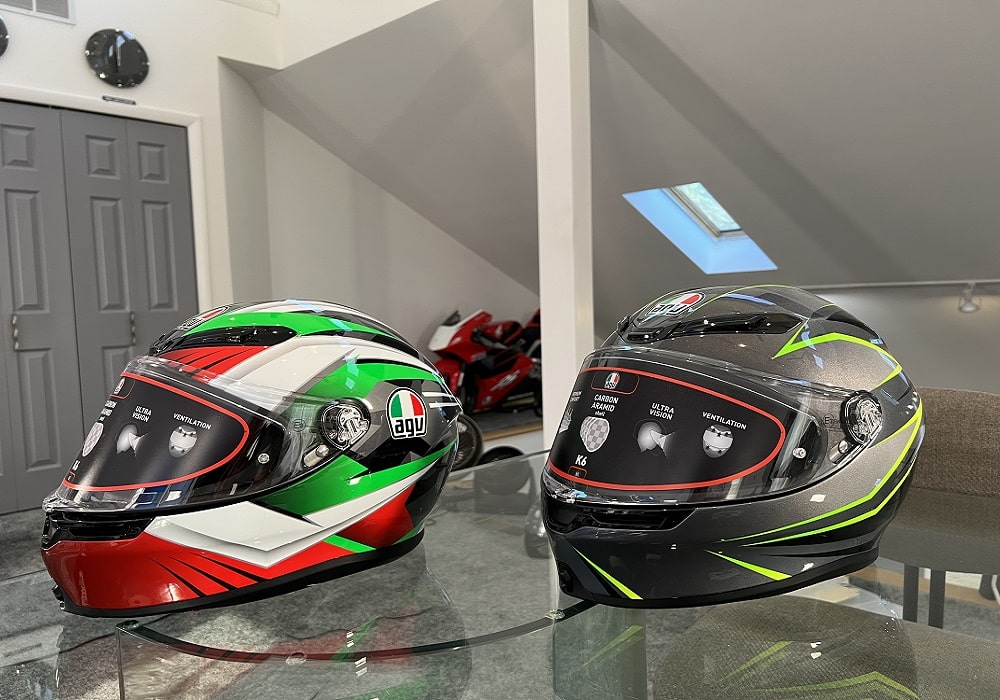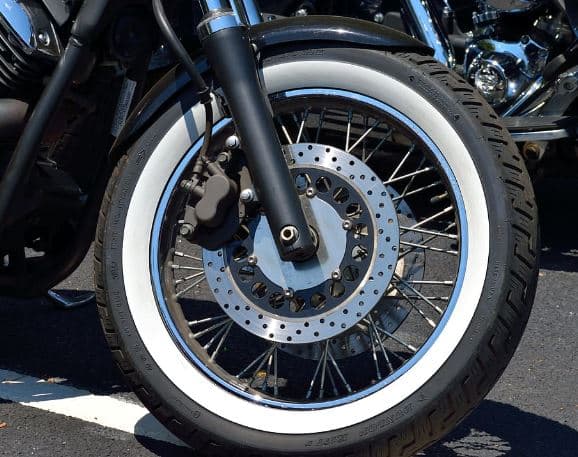Helmets are lifesavers. In practice, during an accident, a helmet reduces the risk of death by 42% and head injury by 69%. For enhanced protection to your chin and jaw, full-face, modular, off-road, and dual-sport designs come with a chin bar – a crucial safety feature that open-face and half-shell helmets lack. The chin receives 55% of the severe blows during a crash, so it’s important to protect it.
Let’s better understand how the chin bar works and how to choose the right chin and shell size for your motorcycle helmet to help you make better decisions about your own safety while riding. Read on!
Should Motorcycle Helmets Cover Chin? Find Out Here!
Two Types of Motorcycle Helmet Chin Bar Styles and Their Benefits
During typical collisions, a motorcycle helmet chin bar absorbs a great deal of pressure, while the chin curtain limits the quantity of air going through the helmet when riding. This usually means better protection, less road noise, and, in colder weather, a higher inside temperature.
All motorcycle helmets are not built equal or even for the same purpose, though. Helmet types vary by riding style and are designed to meet a specific set of requirements for off-road and on-road riding.
For now, let’s dwell on the chin bar differences between road helmets and their off-road counterparts.
One: Pointed Chin Bar (Off-Road and Dual-Sport Motorcycle Helmets)
Helmets for riding off-road (dirt bike, motocross, supercross) and dual-sport (ADV, crossover, hybrid, enduro) helmets have pointed chin bar construction. Well, it may have more to do with safety considerations than styling aspects, and here is why.
Greater Ground Clearance in a Fall
A helmet not only protects your head but also your face from injury. And an off-road helmet chin bar is pointed to reduce contact with the ground in the event of an accident. It may seem unusual that this is required, but it is critical for safety. Helmets can spin upside down in some crashes, shielding faces from dirt and debris on the ground. A pointed chin bar keeps the face clear, so you’re still safe if something happens!
Better Protection for Off-Road Specific Fall Types
The pointed chin bar shape also helps with blunt force dissipation for side falls to prevent injury to the jaw and neck. These falls are common for off-road riding hence the need to develop a specific design that improves safety for off-road and dual-sport riders.
Prevents Twist Injuries and Paralysis
The other advantage of the pointed chin bars is to reduce the chances of paralysis and locked joint injuries. The specific shape forces your body to turn in the direction of impact, relieving pressure on the opposite side and thus twisting force.
Notes: Not all off-road helmets are DOT certified as it is not a requirement for dirt bike helmets. This means that some helmets qualified for this category of riding may, in fact, not be street legal!
Two: Rounded Chin Bar (Road Helmets)
Road helmets are smaller with rounded chin bars for improved speed. They’re generally for street riders.
There are racing-specific helmets designed for minimal drag when slicing through air streams. Street racers tend to prefer small helmets that allow them to zoom in and out on cars as they please, but it’s always sensible to consider safety before the performance.
Minimize Negative Space in the Helmet
To go faster, we want less road and wind noise. For that, we need to get rid of idle pockets of air, which cause turbulence inside the helmet, leading to noise, disorientation, and hazy vision. So, road helmets are made considerably snug and smaller than off-road ones.
Improved Acceleration
A smaller and rounded chin bar means less drag on the helmet and bonce, so sport bike riders can zoom in and out on traffic. You do not want a pointed chin bar when riding at neck-breaking speed; it could literally snap your neck if you turn your head to glance over your shoulder to see your buddy struggling to keep up!
Impact Dissipation
Round shapes are better dissipators of impact force than pointy ones. Road helmets are built with head-on collisions in mind and must feature rounded front ends, including the chin bar, which can sometimes bear the brunt of such a collision.
Easier Slide on the Pavement
It may sound counterintuitive but sliding along rather than digging in on the pavement in the event of a fall guarantees better chances of walking away unharmed. Pointed helmet chin bars encourage turns and twists, which can exacerbate injuries in a fall.
What About Half Shell and Open-Face Helmets?
How safe are motorcycle helmets that do not cover your chin? By design, half and open-face helmets may prevent life-threatening brain injuries if worn correctly. But they should only be considered for short low-risk rides where you are unlikely to be in a serious collision as they are not built for that type of crash.
If you would like to better decipher the various types of helmet constructions, be sure to take a peek at our detailed post on Motorcycle Helmet Styles.
How to Make Sure Your Helmet Fits Correctly?
Unfortunately, because of varied head to face shapes and size combinations, it is difficult to guide you theoretically to the perfect helmet. You literally have to try on quite a few and choose one that feels right for you.
The chin has a lot to do with the right fit helmet. It is a lion’s share of the comfort in a full-face helmet, which allows quiet and less distracting riding while seeing what is going on ahead and around you.
The type of helmet and allowable chin sizes has to do with the type of riding. For instance, road helmets have smaller viewing ports, hence a lot of blind spots compared to adventure helmets, which offer a supreme vertical view up ahead and from the corner of your eye.
If you ride fast and aggressively on the track, you require a helmet with less drag, and that will not break your neck if you glance over your shoulder! That is how critical chin bar size can be for helmets by purpose.
Dangers of Poor Fitting Helmets
A helmet that does not fit right is pointless as it is likely to detach in a crash, leaving you exposed to shed DNA. On the other hand, if it is too tight and uncomfortable, you will be less enthusiastic about wearing it for rides, which defeats the purpose of buying one.
Here are the risks of one that is too tight or loose:
Helmet Too Loose – Helmet Catches the Wind
A sloppy helmet is quite hazardous. A helmet is designed to cushion your head all over, and when you collide, it is supposed to absorb the impact rather than your head. If your motorcycle lid is too loose, two things can happen: First, your head will rattle around within the helmet on impact, causing several hits; second, the wind will catch your helmet and move it around your head, blinding you… Neither of these is ideal!
If your helmet feels cushioned but there is still some movement, adjust the chin strap or swap out the cheek pads with some that are a few mm thicker. Those two easy modifications should suffice as long as the lid is secure elsewhere, fits across your forehead, and does not slip about.
Large, reputable stores usually stock a variety of cheek pads, so you can try them on to ensure the right fit. If the helmet is still too loose following the swap, you should consider a new design shape that will better suit your head.
Helmet Too Tight – Head Hurts
If your helmet is excessively tight, it can create headaches, soreness around pressure points, and a generally unpleasant experience; worst-case scenario, it can be distracting, which isn’t a good thing when riding a motorcycle.
If you get pain across your forehead or on your ears, you have a helmet that is too small. Another indicator that your gear is too tight is the pressure points around your head. If you take off your helmet and feel sore all over your head, it is too small. The helmet may fit perfectly elsewhere, yet it may be too tight on the top of your head or the cheek pads. These items will wear down with time, and you do need them to fit tightly, but they do not have to be unpleasant.
Some manufacturers may replace the cheek pads and inside lining to make the helmet a little looser and more comfortable.
6 Tests to Choose the Right Chin and Shell Size for Your Motorcycle Helmet
Do not rely on manufacturer size specifications to determine the right fit for a helmet for you. Instead, physically try on as many helmets as you are allowed to at a shop near you and check the following.
1. How Wide Is Your Head?
You can start by taking the measurement of your bonce circumference. Don’t worry, you do not need math for that, just do a perimeter kind of measurement with fabric tape measuring about a half an inch (1cm) above your eyebrows, around the back, and back to the forehead. This should give you the ballpark helmet size where you can start checking different manufacturers.
2. Snug Is Safer, Not Tight
Remember the above test only gives you a rough estimate, it may not be an accurate prediction at all. Try on the helmet, it should feel snug but not uncomfortable. Fasten the strap as far as it goes without choking you to be sure. Just how tight you ask? Ensure its snug, but you can still squeeze a finger or two between your chin and the buckle. Don’t strangle yourself!
3. Feel the Fit
You will now be tasked with deciding if that helmet feels like one you can ride 1,000km in. It is that simple! If a certain part is pressing against your scalp a little more than you like and you don’t have hair to lose in that area, you should consider another helmet.
4. Shake It Sideways and Up-Down
Now, hold the chin bar of the helmet and try to force your head to wiggle inside the gear while firmly securing the chin in place. First, move sideways and then up and down. Ideally, the lining of the helmet should want to move with your head. If there is a slip and the head rotates more than a few degrees inside the helmet, you should consider a smaller size or same size helmet by another manufacturer.
5. Do a Mirror Check
It may seem awkward trying on a lid in front of a mirror, but it is a clever way to ascertain the right size for you. Look for a central position of your eyes in the viewing aperture and sufficient space from the chin bar of the helmet.
6. Endurance Test
Now you wait! Pull the lid over your head and find an excuse to keep it for half an hour or so. That long will reveal any pressure points that might feel okay but ache badly after hours of torture under the helmet.
Pro Tip: While your helmet should fit snugly, it’s crucial to keep in mind that after a while, the helmet will loosen up. With continuous use, the comfort liner becomes readily squeezed. Your new helmet should have a snug fit without feeling too tight. It should loosen to the proper snugness after some time wearing it.
The Takeaway: A Chin Bar Is Necessary for Motorcycle Helmets
In 18 American states and the District of Columbia, riding a motorcycle without a helmet is illegal. That might be hazardous. A helmet’s chin bar is essential for protecting your head in case of an accident and safeguarding you while riding. In any case, it’s critical to remember that the level of protection provided by a helmet is determined by how well it is built and how it fits.
You must verify that your lid fits properly before purchasing one. An oversized helmet is not implausible to slide off after a disaster and fails to protect you completely. A small helmet, on the other hand, can feel awkward and uncomfortable, discouraging you from wearing it.
Information for this article was partially sourced and researched from the following authoritative Government, educational, corporate, and nonprofit organizations:
Effect of helmet design on impact performance of industrial safety helmets
Choose the Right Motorcycle Helmet
About the Author:
Michael Parrotte started his career in the motorcycle industry by importing AGV Helmets into the North American market. He was then appointed the Vice President of AGV Helmets America, total he worked with AGV Helmets for 25 years. In addition, he functioned as a consultant for KBC Helmets, Vemar Helmets, Suomy Helmets, Marushin Helmets, KYT Helmets, and Sparx Helmets.
In 1985, He is the Founder of AGV Sports Group, Inc. cooperation with AGV Helmets in Valenza Italy
Click here for LinkedIn Profile: https://www.linkedin.com/in/parrotte/
Click here for complete AGV Helmet & AGVSPORT History https://agvsport.com/michael-parrotte
Click here for all AGV Sports Group Social Media information http://agvsport.info/
FM/A

